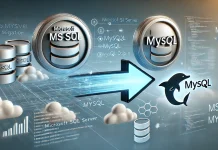There are several key steps to properly secure your custom software development life cycle (SDLC) processes. The bespoke application development process tends to riddled with potential security flaws, vulnerabilities, and weaknesses. Today’s most proactive development teams must adopt hardened principles and protocols to keep their workflow protected. As a software development team leader yourself, the proper security practices can quite literally make or break overall project success. These operations inspire user confidence, protect sensitive system data, and ensure ongoing compliance. Fortunately, there are a number of effective ways to improve data security and software quality in 2022. To get started now, read on to learn how to secure your custom software development life cycle processes.
These cyber-defense experts from custom financial technology solutions can introduce new ideas, strategies, and practices to keep the product safe throughout the lifecycle.
Start With Thorough Planning
Initially, you should start the secure software development lifecycle with thorough, in-depth, and detailed planning. Requirements planning is traditionally ran by senior development executives, external stakeholders, and a small sample of beta users. To promote security, you should also heavily-involve quality assurance (QA) and software testing teams. These cyber-defense experts can introduce new ideas, strategies, and practices to keep the product safe throughout the lifecycle. With their expertise, you should conduct a feasibility study before kickstarting the project. This will analyze long-term system viability from an operational, financial, and technical perspective. With these insights, project managers will better be able to establish and implement quality assurance (QA) requirements. Definitely, start off your secure software development life cycle with in-depth, thorough planning.
Use The Latest Tools
You can additionally protect your SDLC workflow and processes by using the latest development tools. There are a wide variety of tools that promote software security, data protection, and vulnerability defense. For example, many teams use a secure, private Helm repository by JFrog for fine-grained access control and fully-featured artifact management. These solutions provide enterprise-ready functionality, which can accommodate terabyte-laden repositories for charts management. Plus, these powerful capabilities empower you to fully-automate Helm chart provisioning, scripts, and software delivery. Certainly, use the latest tools and technologies to harden your SDLC workflow this year.
Build Prototypes
A secure software development life cycle (SDLC) is always focused on prototype construction. Prototypes help developers identify functionality issues, pick up on performance weaknesses, and hone in on different security vulnerabilities. With this, teams can solve complex security, algorithmic, or performance problems before they even arise. Once a prototype is finalized, you’ll be able to update your software design document (SDD) and central codebase. This can help you minimize workflow interruptions, development barriers, or deployment obstacles later-on. If these steps are skipped, you can risk security noncompliance or failed testing down-the-road. Absolutely, building prototypes is critical to properly secure the custom software development life cycle.
Conduct Vulnerability Remediation
After each build stage in the SDLC, allocate time to perform vulnerability remediation. This is a security-focused workflow meant to uncover, analyze, and neutralize system weaknesses. Throughout this process, your team will need to find, prioritize, fix, and monitor any potential threats. When implemented properly, this assures heightened security, continuous operational efficiency, and immediate application repairs. Additionally, it helps team with insightful bug reporting, detection, and remediation. Executing these processes helps you better visualize risks, measure results, and contextualize different review data. Indeed, incorporate vulnerability remediation processes into your secure software development life cycle.
Perform Routine Maintenance
Even after bespoke software is deployed, the secure SDLC is still not complete. Maintenance and continuous performance monitoring should be a central component of your overall security framework. During this phase, encourage QA teams to regularly evaluate software performance in the real-world. Have them collect user feedback, identify any suspicious behaviors, and mitigate any potential risks. They can also update system libraries, roll out new patches, or introduce new features. You never want to just deploy an application, then forget about it. Otherwise, detrimental security flaws, hacks, and data breaches could potentially occur. Surely, perform routine maintenance to properly secure your software development life cycle.
There are several key steps to properly secure your custom software life cycle processes. Bespoke application and cloud computing security is vital for today’s most successful development teams. First off, begin the secure software development life cycle with thorough planning. Additionally, you can work with the latest development tools, programming resources, and supporting technologies. With these tools, build, configure, and visualize lots of functional prototypes. Plus, dedicate plenty of time to remediate and eliminate any possible vulnerabilities. Even once the software is deployed, keep introducing new security practices, procedures, and principles. Follow the points highlighted above to learn how to secure your custom software development life cycle processes.








